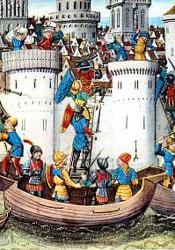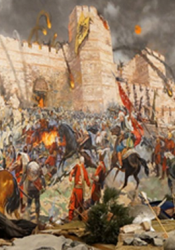Istanbul
Istanbul, formerly Constantinople, was the capital city of the Roman/Byzantine Empire (330–1204 and 1261–1453), and also of the brief Latin (1204–1261), and the later Ottoman (1453–1923) empires. It was reinaugurated in 324 AD from ancient Byzantium as the new capital of the Roman Empire by Emperor Constantine the Great, after whom it was named, and dedicated on 11 May 330 AD.
Coordinates
Latitude: 41.008237600000
Longitude: 28.978358900000
Longitude: 28.978358900000



